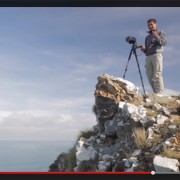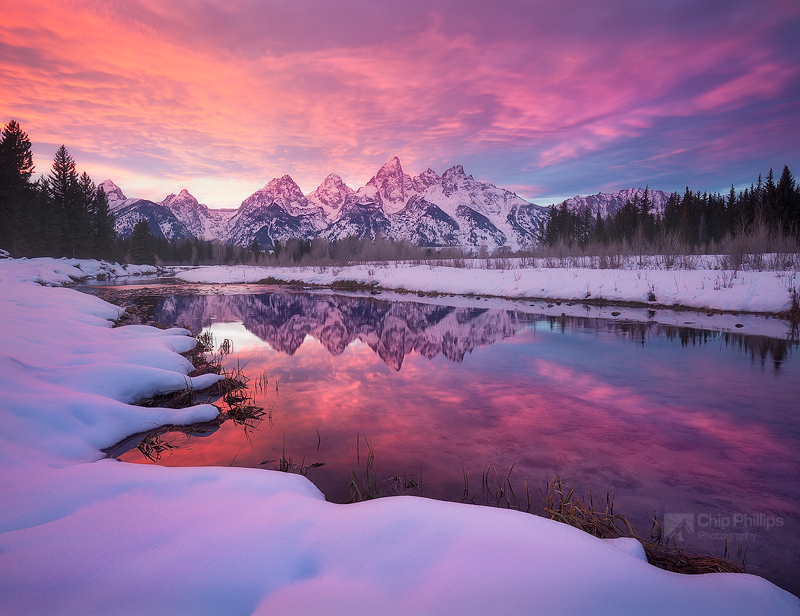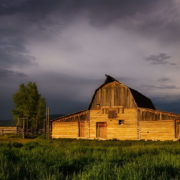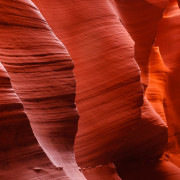How many Megapixels do I need for Landscape Photography?
Since the beginning of the digital era, camera manufactures have been in a race for the highest megapixel count. Megapixels are frequently listed at the top of the list of specifications for a camera. Even the sales associates at a brick and mortar store are trained to use those megapixel numbers in their sales pitch. But have you ever wondered how many megapixels are enough for landscape photography?

Landscape Photography with 12 megapixel Canon 5D, Rocky Mountains, Glacier National Park – Montana, USA
The answer to this question depends upon what you are trying to accomplish. Let’s take a look at the graphics of a typical digital camera available on the market today. I carry Sony A7rII with 42MP resolution as a primary camera and a Sony a6300 with 24MP resolution crop sensor as my backup camera. The resolution and print size of both these camera is shown in the image above. There are times when I prefer shooting with Sony a6300 over Sony A7rII even though Sony a6300 has lower megapixels. Why? Because I can take advantage of multiplier effect of the crop sensor when I am shooting wildlife or macro subjects and, at 24MP, my Sony a6300 gives me more than enough resolution for my needs.
Now, when you compare the resolution of the camera with the typical display devices available today you will notice that the resolution of the camera far exceeds the ability of the display devices. In other words, the images from the digital camera must be down-sized to be displayed even on a high resolution 4K monitor. But what about other mediums such as prints, magazines, and calenders?
Let’s look at typical uses and the camera resolution in megapixels that you may need for landscape photography.
Landscape Photography sharing on Social Media
This is by far the most common use of photos taken by photographers. Everyone wants to take a quick shot and share the photo they have captured. If you were to view social media on a mobile device (such as as smart phone or a tablet), you don’t need more then 2000-3000 pixels in the longest dimension to fill the screen. If you are a tech junkie who likes to browse the social media on a 4K monitor, a 3840 pixel resolution landscape photo easily allows you to fill the screen with the photos. So to be honest, in these use cases, a camera like Sony A6300 is more than capable of delivering enough megapixels to meet all your needs.
On Screen Presentation and Online Promotions
This use case is very similar to the one described above. Most presentations and online promotional materials are viewed on large monitors or using a projector. The current state-of-the-art resolution for these devices is the same as a 4K monitor; a super-high megapixel camera such as Sony a7rII is an overkill for this application. In most situation, we must downsize our photos to add them to the slide show.
eBooks and Videos Tutorials
We typically view eBooks and video tutorials on tablets, computers, or big-screen TVs (we have customers who stream our videos in high resolution to their TVs from their tablet). Here again, we don’t need any more resolution then what a 4K monitor can handle. Even if we have to supply high resolution files without post-processing the tutorial, there is no specific megapixel requirement. We frequently use files from our older 18MP and 21MP cameras to demonstrate a particular post processing technique.
Outdoor Portraits
This is by far one of the most common uses for taking photos. Even nature photographers tend to print snapshots and informal portraits from time to time. For this use case, we frequently reduce the size of each photograph to about 8.6 Megapixel (3600×2400). Most clients don’t want or need a larger file and these print beautifully as large as about 12×8 inches. Since people rarely print portraits larger than that, the size is more than enough for their needs.
Calendars and Magazines
Calendar sizes ranges from 10×8 inches to 36×24 inches or larger. The most common magazine size is 8.5×11 inches or smaller. For these smaller-sized calendars and magazines, even my Sony A6300 camera resolution is sufficient to create exquisite calendar photos with superb details.
We’ve had a few instances where our prints have appeared in large-sized fine art calendars. We would have preferred to use all images from Sony a7rII for such a large-size fine arts calendar. However, the calendar company did not care about the resolution of the photos. They picked the images based on the light, colors, seasons, weather, and other factors. The cover photo of the 2018 calendar in the photo above is from a 12 Megapixel camera that was scaled up to the right size.
Fine Art Landscape Photography Prints
The situation is very different in the fine arts market. Many photographers believe that they need a fancy camera because a high megapixel count is absolutely essential. If I make a fine art print at 300 DPI, my Sony a7rII allows me to make prints as large as 26.5 inches with its native resolution (without having to resort to interpolation). If you were to use 240 DPI resolution, this number increases to over 32 inches.
It is important to point out that this evaluation is based on the current state of technology. As the technology advances and display, prints, and camera resolutions change, these use case evaluations may change as well.
So, the next time you buy a new camera, ask yourself how you intend to use the camera. Think about all the features on the camera. The megapixel count is just one feature. What else is important to you?
What camera do you use to take nature photos? Do you have a need for higher megapixel camera? If so why? If not why not? Feel free to comments below.












Hi Jay, What mirrorless or DSLR camera would you recommend for fine art printing on apparel, home decorating (pillows, etc.), bags/totes, and the like? Also, what if you also wanted your prints to become wall art? (I’m leaning towards mirrorless.)
If your are taking outdoors photo in relatively good light any DSLR with an interchangeable lens would work just fine. I would recommend about 24 MP camera which will should give you more than enough resolution and an ability to crop a bit if you need to.
Really helpful article on a confusing subject but I have a question about cropping, or how much is too much. Does heavily cropping a wildlife photo, say reducing a 6000 X 4000 pixel photo to 3000 X 2000, have an negative impact on how it would look on a large monitor? From your article it appears that it might, or does the size of the monitor make no difference, it’s the resolution of a monitor that matters? I crop bird photos taken on my A6500 and edited on a laptop but I sometimes wonder how they look when viewed on a 27″ monitor.
Any digital monitor no matter how big it is cannot display more pixels than its native resolution. This is one of the reason why companies are coming out with 8K monitors for 50+ inch monitor. Now if you have an old analog monitor things are quite different.
What a timely article. I’m considering upgrading from the Sony a7ii. I mainly shoot landscape but am getting more into sports. I would love the a9 but budget wise how can you go wrong with the a7iii. I don’t print large so I don’t think the a7Riii is for me.
If you are into sports Sony A9 is definitely the way to go. I would even recommend Sony a6500 series over Sony a7r3. The frame rate for Sony’s a6500 is so much higher then a7r3….and you do not need the resolution. The only advantage you have with a7r3 is ability to crop and high ISO noise. So if you have the reach with your lens and you shoot in well lit situation, a6500 would work out well.
Hi Jay,
I’ve been watching your career since TimeCatcher days, a long time! 😀
I think you have some wonderful pictures. What I’d love to know is exactly how did you manage to print a 36″ photo from 12 mpx. Interpolation, less than 300dpi, all at the same time? Something else?😁 Sorry for all these questions, but I’d really liked to know. Thanks and keep the good work.
João Domingues
We used to use a special upscaling program back in the day. Now a days Photoshop “Preserve Details and Preserve Details 2.0” does an excellent job for up-scaling images up to 300-400%. Also when your prints get to be about 36 inches we do not use 300 dpi for printing. It is an overkill. We fall back to 240 dpi because your viewing distance is larger with larger prints.